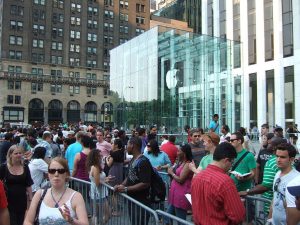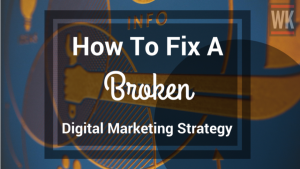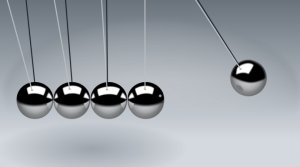
Appealing to the emotions of your website users is nothing new and certainly something that marketers and branding experts will have plenty of experience and specialist knowledge of. But because the online world is becoming so saturated with content, and because first impressions count, making people feel instantly at home on your site has never been more important.
With SEO copywriters working hard on telling that all-important brand story and stunning images that inspire and uplift your visitors, you might think you’ve got everything covered. But if you haven’t looked at your use of colours in a while, you might be missing a trick.
The simple fact is that colour is the first thing that visitors assimilate when they arrive on your site. It comes before images, typefaces, body copy or other online content, and without people even realising it, can change the way they think and act. Humans are programmed to equate colours to emotions, so whether you aim to soothe, energise, excite or promote trust, it’s essential to choose your colours wisely.
Which colours should you use?
Your choice and combination of colours will of course depend upon your website design, your corporate branding identity and especially your audience. What kind of impression do you want to give? A company looking to portray a feeling of security, intelligence and dependability, would very likely choose different colours to one wanting to show passion, power and the excitement of living life on the edge.
Basic colour meanings include:
Red
Passionate love, violence, danger, anger, strength, youth, fire, blood, magic, religion, heroism, stop, good luck (in Asia). Red is also worn by brides in India and Nepal and in Japan, a red kimono symbolises happiness and good luck, and red is such a popular colour that it is included in 77% of all world flags. Being such a visible colour (second only to yellow for human sight), you don’t need to use much red to create a web design with impact. It is a colour often used to capture immediate attention and works well as an accent colour.
NOTE: 8% of the male population has red-green vision deficiency and cannot see red.
Yellow
Although yellow is the colour of happiness, optimism, warmth, enlightenment, clarity, sunshine, and spring, it also has a few negative connotations too, in the form of cowardice, betrayal, madness and illness.
Yellow is the most visible colour to the human eye, so is great for use in areas that you want to draw attention to. It is also highly reflective so can irritate the eyes if used excessively.
Blue
Blue has been shown again and again to be most people’s favourite colour. It is found in nature in water and sky, and therefore often gives a sense of serenity, peace and infinity. It is also seen as the colour of intelligence, loyalty and authority but can – depending on the shade of blue used – be cold, sad or utilitarian.
Although blue is the most common colour in corporate identity design, there are plenty of contradictions when using the colour in a global sense. For example, in Korea, dark blue is the colour of mourning.
Design-wise, blue is used so often that it can be seen as rather clichéd, but teamed with other colours, can work well across many spectrums and industries.
Other concepts and emotions typically connected with certain colours include:
- Green – peace, nature, growth, healing, compassion, vitality, freshness, life, relaxation, eco-friendly, organic
- Orange – friendliness, creativity, warmth, cheerfulness, positivity, enthusiasm, adventure, fun, activity
- Purple – wealth, extravagance, sophistication, creativity, fantasy, dreams, spirituality, immaturity
- Pink – hopeful, non-threatening, feminine, romantic love, compassion, nurturing, innocence, inexperience, intuition, girlish
- Grey – balance, neutrality, reliability, intelligence, security, maturity, professional, contemporary, lonely, dull
Colours and culture
Of course, colour meanings can differ widely according to culture and so when choosing colours, it’s important to take these differences into account, particularly if you know that a large proportion of your international visitors are located in a particular part of the world or come from a certain culture.
Although there has been a narrowing of colour meanings between countries in recent years (due in large part to the internet), it would be wise to check that you haven’t made a cultural colour blunder before you finalise your website palette.
Colours and gender
Because colour psychology seems to play such a large part in people’s emotional states and subsequent purchasing decisions, it’s no surprise that there has been plenty of research into which colours are the ‘right’ ones to use.
Research by Kissmetrics, for example, looked at colour preferences according to gender. In a survey of 232 people from 22 countries around the world, they found that blue, purple and green were the top three favourite colours used in web design for women, compared to blue, green and black in web design for men. Least favourite colours for both men and women were orange and brown.
Testing, testing
Perhaps the most important thing to do, once you’ve looked at your purpose, your audience and your website marketing strategy, and once you’ve gone through the colour theory side of things, is to carry out website split testing on a few colour variations of your website to a sample audience.
By asking tailored questions, you will soon gauge an understanding of how your users feel when they land on your site and navigate through. Can they give two or three words to describe how they feel? Are there any areas where the contrast between colours isn’t clear enough? Are some colours jarring to the eyes? Let them tell you and take on board their answers.
Hopefully this blog post will have started you thinking about the use of colour in emotional website design. As always, the central focus should be on your user. How do you want them to feel when they visit your site? By concentrating on what your visitors want and need, you will be able to tailor the colours of your site so that, without your audience even realising it, you can influence emotional response, brand loyalty and online behaviour.
Digital & Social Articles on Business 2 Community(46)









